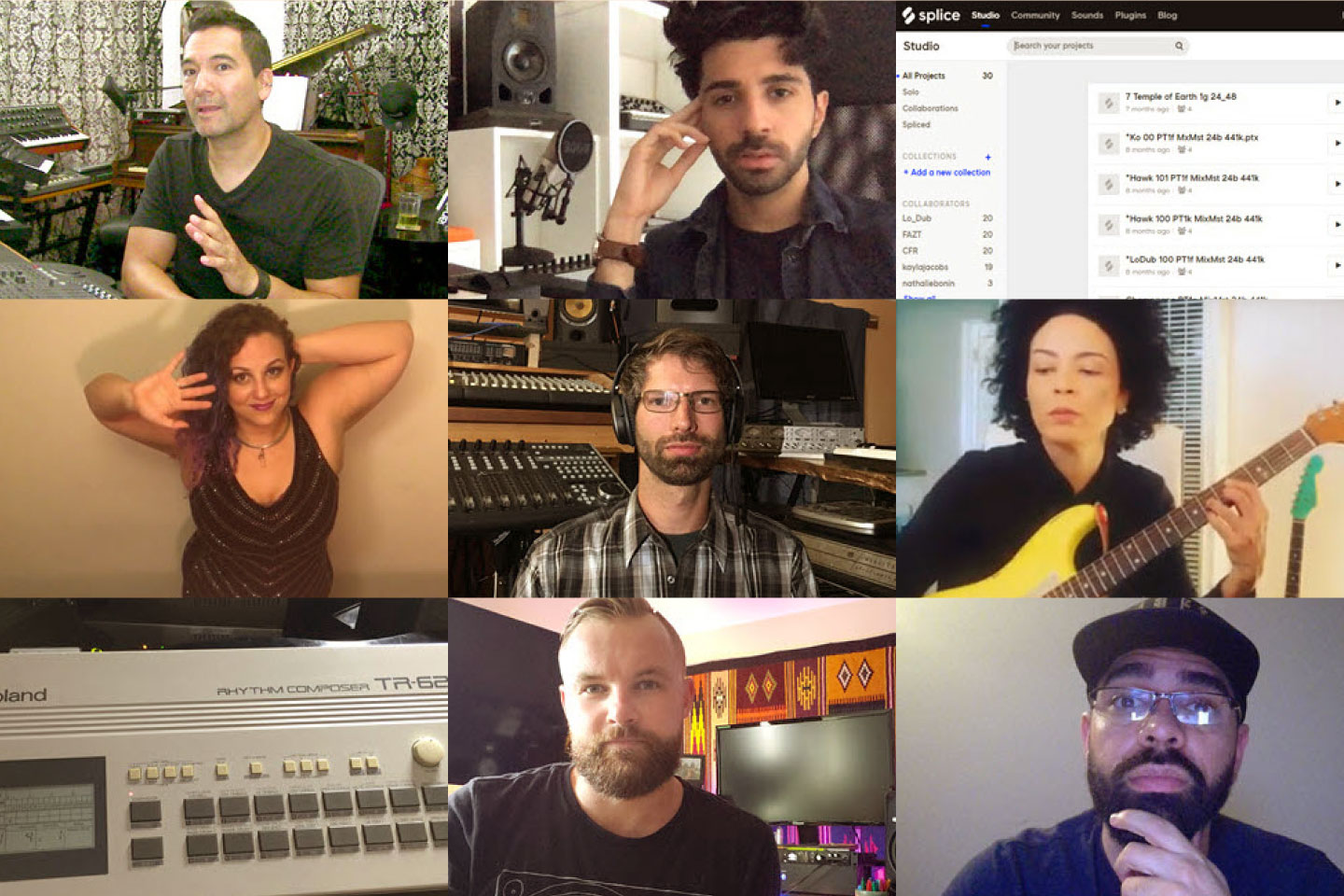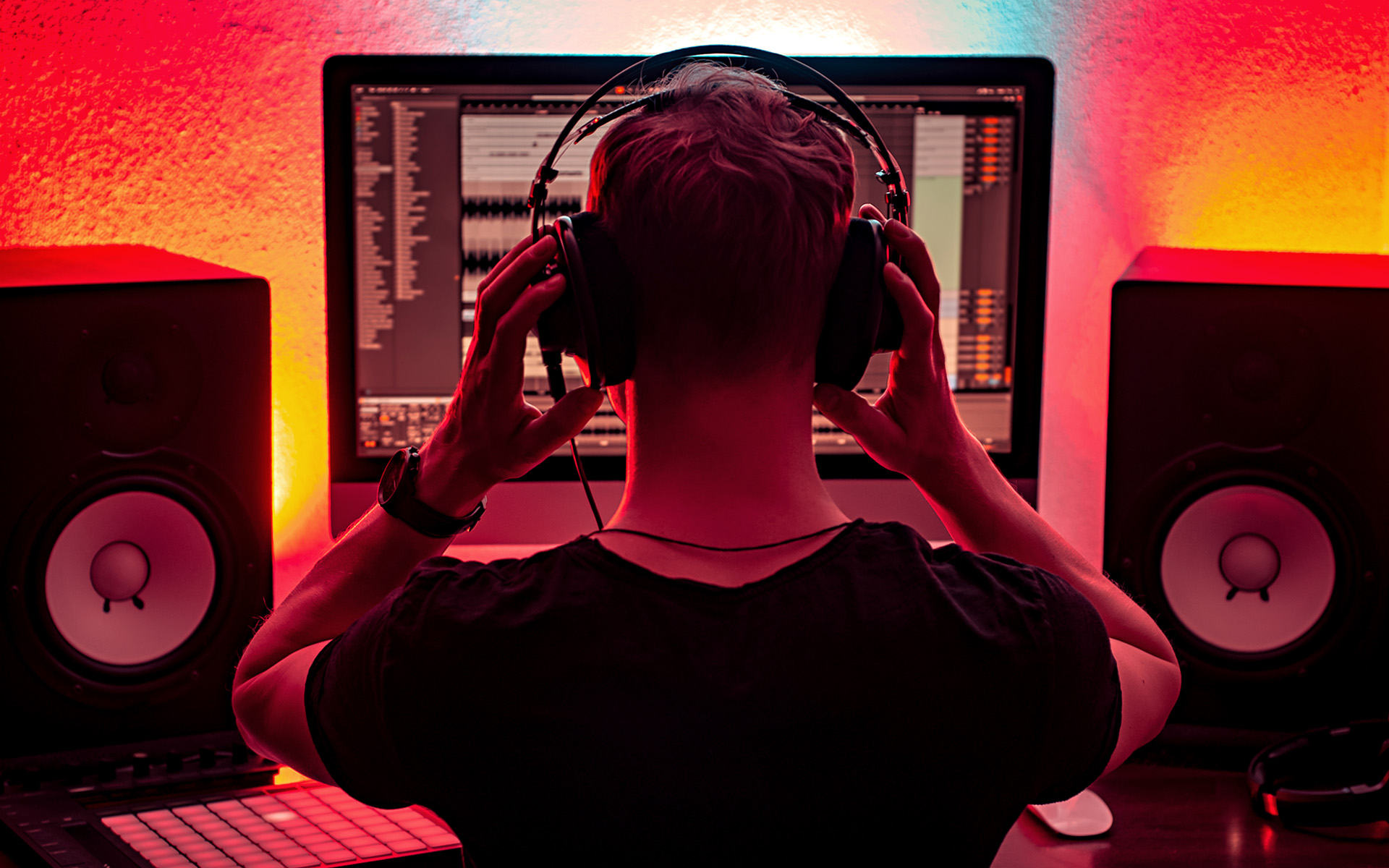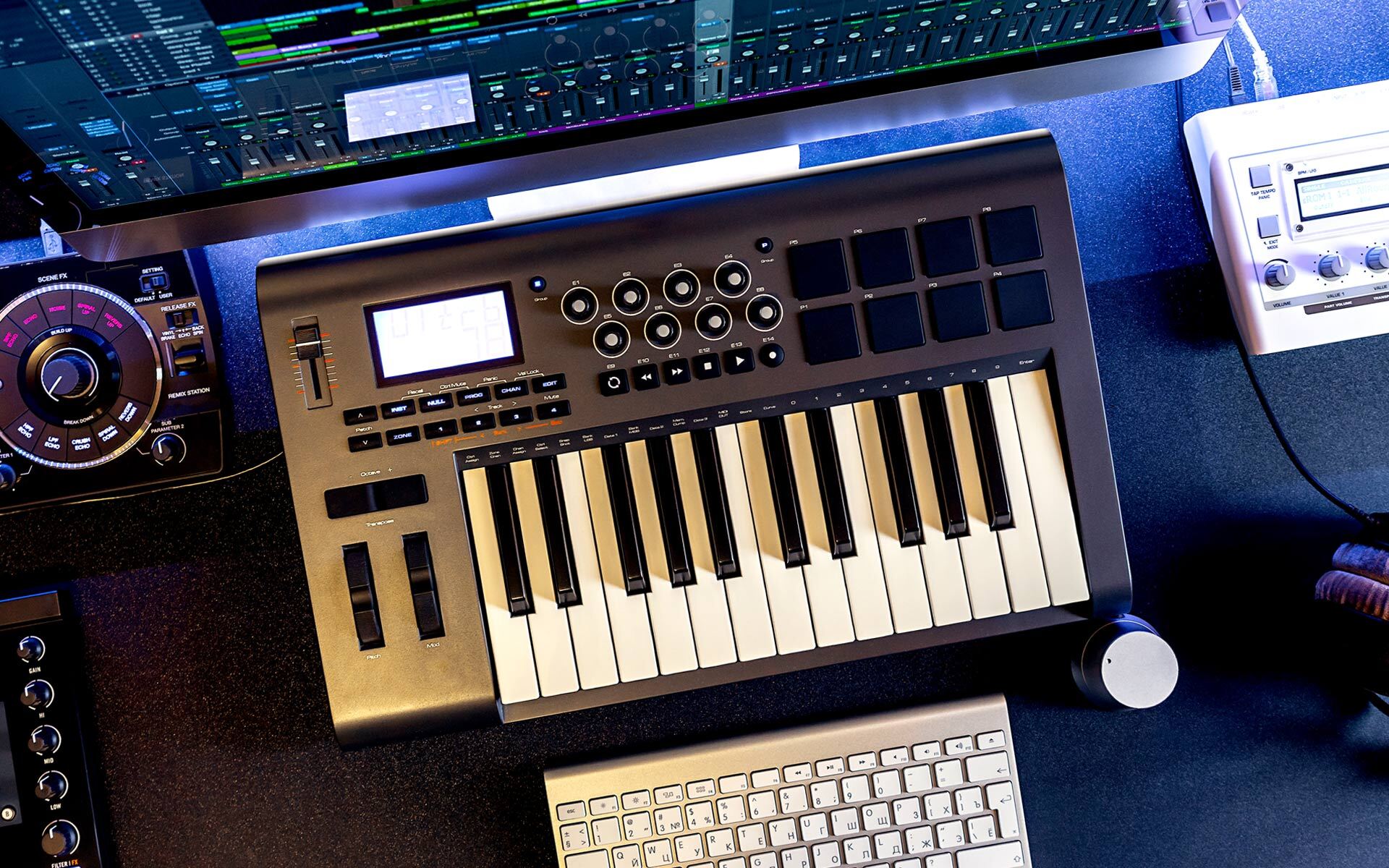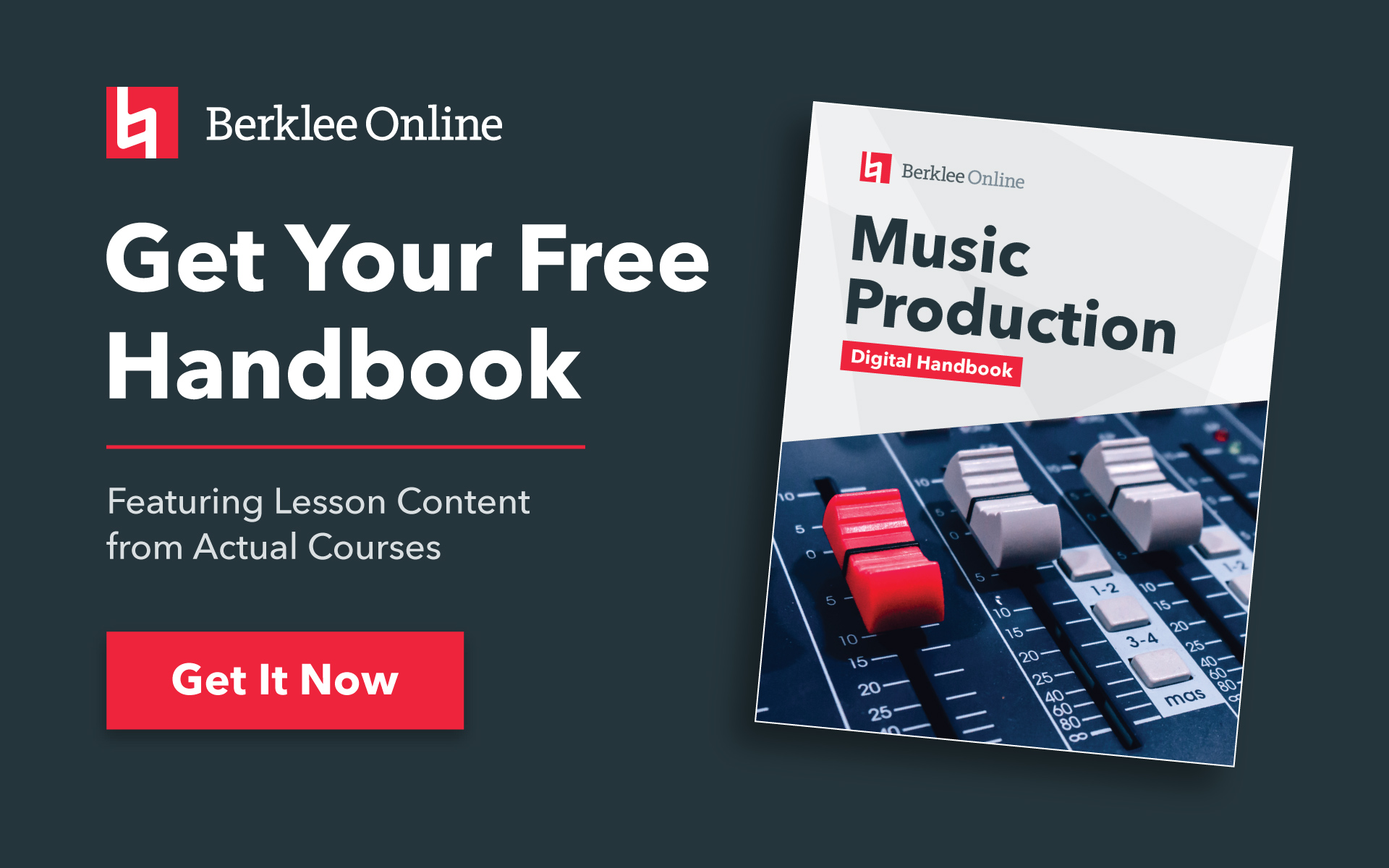Over a six-month period, Loren Feinstein drove to his local library afterhours to borrow wifi from his parked car. The signal can be spotty where he lives in the rural foothills of the Berkshire mountains in Massachusetts, but that didn’t stop him from producing an album remotely with his Berklee Online classmates and instructor, Erik Hawkins.
“I guess my biggest takeaway is that online collaboration is totally a viable way to produce music and even compose music,” says Loren, who earned his advanced certificate through Berklee Online. “It was really cool to see that each person could add their own compositional style to a production and it could end up a cohesive body of work.”
It was Hawkins’ idea to bring together his students from across the globe to test out the Splice Studio system. Splice primarily sells sounds and plug-ins, but this free feature on Splice Sounds allows musicians to co-write and co-produce remotely. Hawkins wanted to test the limits of online music collaboration.
In a new video tutorial, Hawk shows viewers how to install and use Splice Studio with Ableton Live, though it will also work with other DAW programs such as Logic Pro X, FL Studio, Garageband, and Studio One.
As Hawk mentions in his tutorial, the experiment proved to be more than just proof of concept. By the end, he and his Berklee Online students Loren, Fotis Sierra, Konstantin Ladilov, and Kayla Jacobs produced an 11-track album called Multitrack. Their classmates James Saez and Luis Franco Rivera mastered the album and created the artwork, respectively. Multitrack is available to stream on Spotify and SoundCloud.
Fotis, a student in the Electronic Music Production and Sound Design bachelor’s program at Berklee Online, says the best feature on Splice Sounds is the unlimited free online storage. He likes that working in real-time avoids back and forth by email and eliminates the need for storage programs like Dropbox. He also likes having the ability to store multiple versions of a project and the ability to go back to a former version of a track.
“The fact that we can save our own sessions with unlimited storage is a huge plus,” says Fotis. “When I’m working on an album, there’s usually a point where we start one way, and then along the way we deviate and say, ‘how can we return back to the previous?’ I just open that version and it instantly takes me back, like going back in time. Such an amazing feature.”
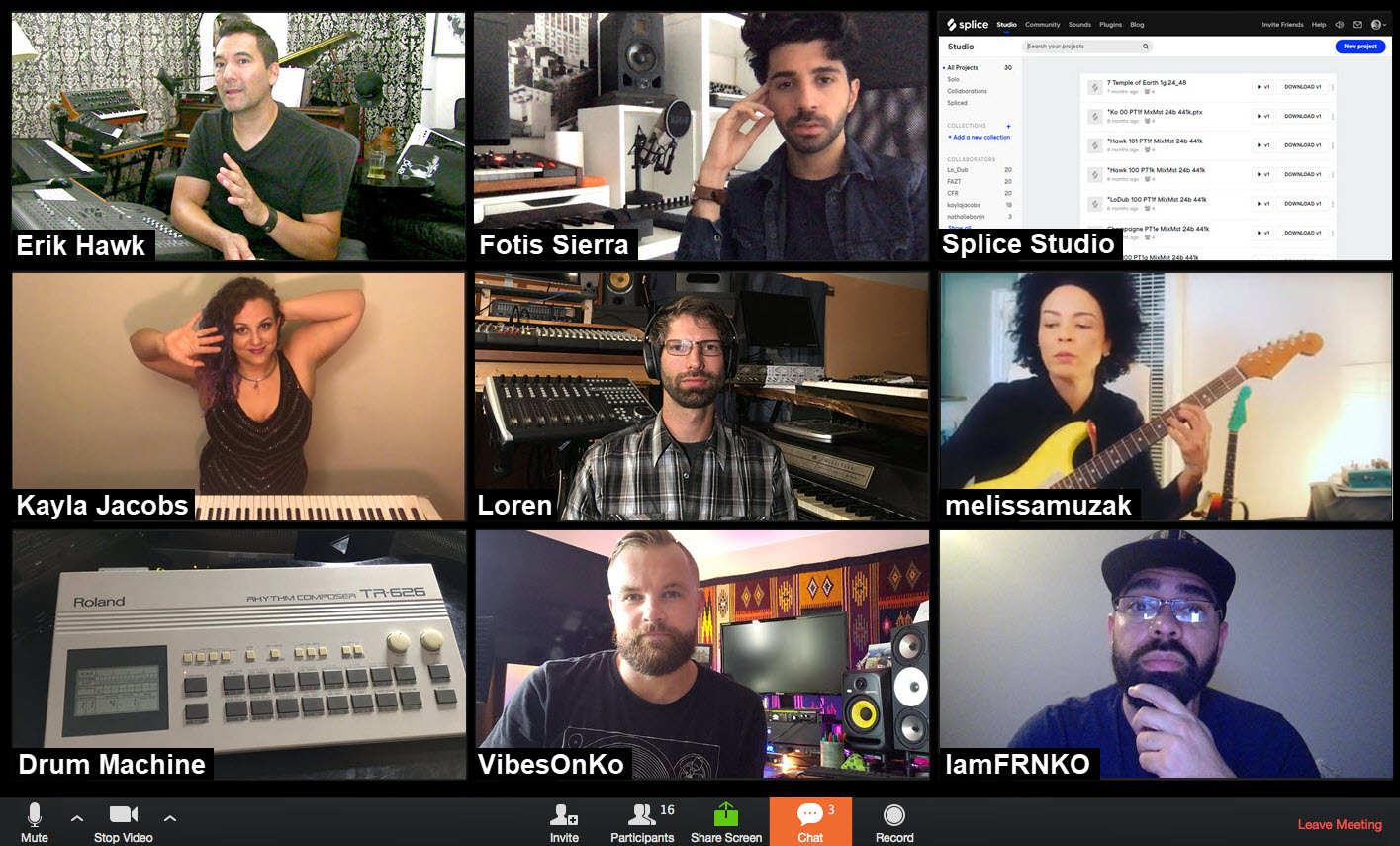
Hawk says that the possibility of long-distance music production has become possible only recently because of the amount of bandwidth that we now have for the internet. He says that the music industry will likely continue to move toward more and more remote musical collaboration.
“It’s a brave new world in terms of that,” he says. “Doing the almost real-time collaboration process where you can write a track, it can be automatically uploaded, and then 15 minutes later your co-writer or co-producer on the other side of the world can listen to what you did. That’s pretty, pretty cool. And we’ve definitely reached that.”
STUDY MUSIC PRODUCTION WITH ERIK “HAWK” HAWKINS





